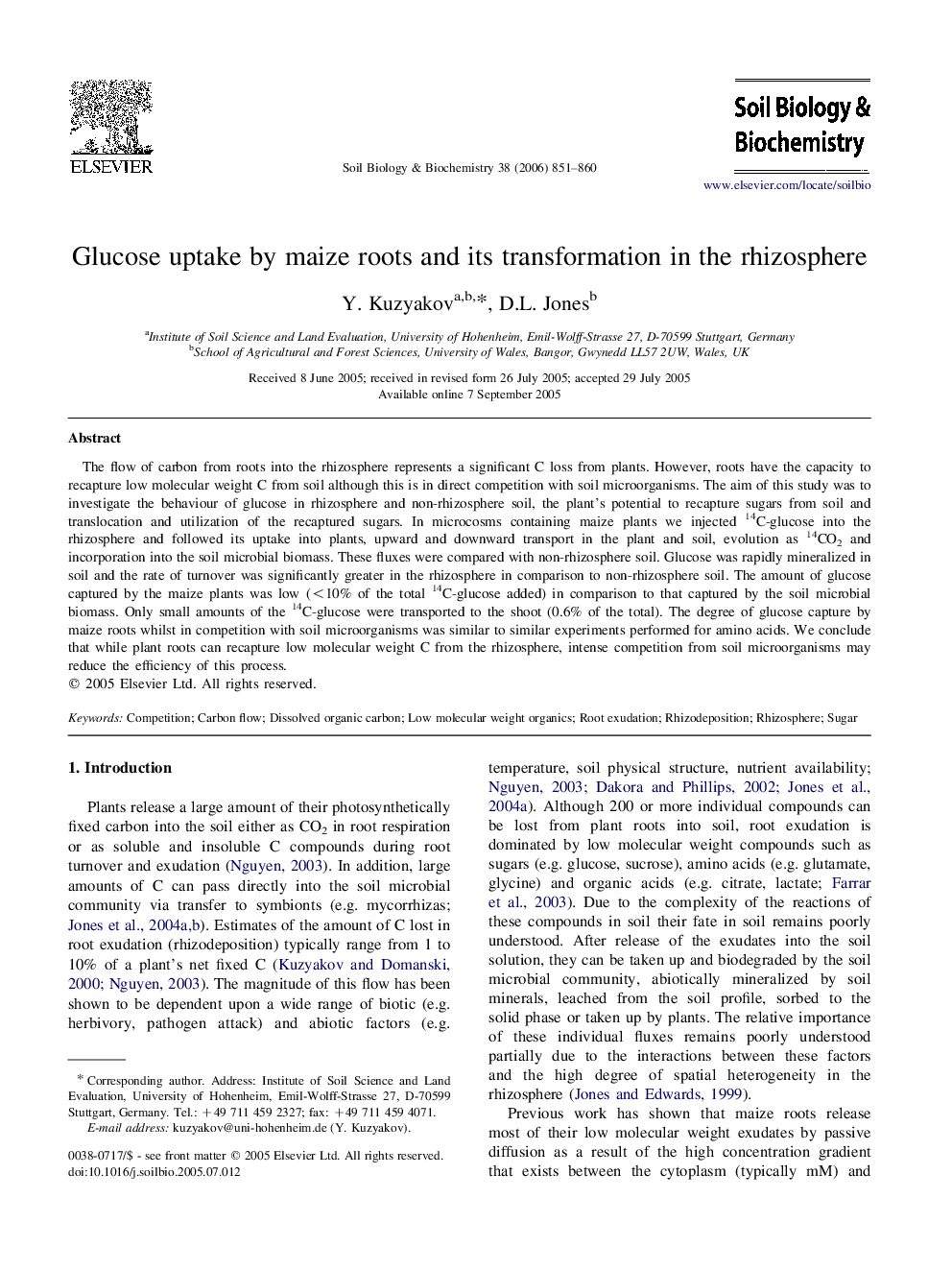| Article ID | Journal | Published Year | Pages | File Type |
|---|---|---|---|---|
| 2026315 | Soil Biology and Biochemistry | 2006 | 10 Pages |
The flow of carbon from roots into the rhizosphere represents a significant C loss from plants. However, roots have the capacity to recapture low molecular weight C from soil although this is in direct competition with soil microorganisms. The aim of this study was to investigate the behaviour of glucose in rhizosphere and non-rhizosphere soil, the plant's potential to recapture sugars from soil and translocation and utilization of the recaptured sugars. In microcosms containing maize plants we injected 14C-glucose into the rhizosphere and followed its uptake into plants, upward and downward transport in the plant and soil, evolution as 14CO2 and incorporation into the soil microbial biomass. These fluxes were compared with non-rhizosphere soil. Glucose was rapidly mineralized in soil and the rate of turnover was significantly greater in the rhizosphere in comparison to non-rhizosphere soil. The amount of glucose captured by the maize plants was low (<10% of the total 14C-glucose added) in comparison to that captured by the soil microbial biomass. Only small amounts of the 14C-glucose were transported to the shoot (0.6% of the total). The degree of glucose capture by maize roots whilst in competition with soil microorganisms was similar to similar experiments performed for amino acids. We conclude that while plant roots can recapture low molecular weight C from the rhizosphere, intense competition from soil microorganisms may reduce the efficiency of this process.
